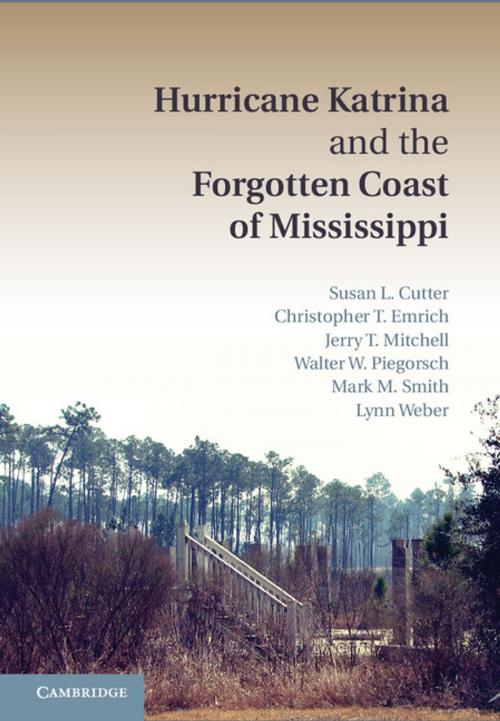Hurricane Katrina and the Forgotten Coast of Mississippi
Nonfiction, Reference & Language, Law, Environmental, Science & Nature, Nature, Science| Author: | Dr Christopher T. Emrich, Dr Jerry T. Mitchell, Dr Walter W. Piegorsch, Dr Mark M. Smith, Professor Lynn Weber, Dr Susan L. Cutter | ISBN: | 9781139861854 |
| Publisher: | Cambridge University Press | Publication: | April 7, 2014 |
| Imprint: | Cambridge University Press | Language: | English |
| Author: | Dr Christopher T. Emrich, Dr Jerry T. Mitchell, Dr Walter W. Piegorsch, Dr Mark M. Smith, Professor Lynn Weber, Dr Susan L. Cutter |
| ISBN: | 9781139861854 |
| Publisher: | Cambridge University Press |
| Publication: | April 7, 2014 |
| Imprint: | Cambridge University Press |
| Language: | English |
Hurricane Katrina slammed into the Gulf Coast in August 2005 with devastating consequences. Almost all analyses of the disaster have been dedicated to the way the hurricane affected New Orleans. This volume examines the impact of Katrina on southern Mississippi. While communities along Mississippi's Gulf Coast shared the impact, their socioeconomic and demographic compositions varied widely, leading to different types and rates of recovery. This volume furthers our understanding of the pace of recovery and its geographic extent, and explores the role of inequalities in the recovery process and those antecedent conditions that could give rise to a 'recovery divide'. It will be especially appealing to researchers and advanced students of natural disasters and policy makers dealing with disaster consequences and recovery.
Hurricane Katrina slammed into the Gulf Coast in August 2005 with devastating consequences. Almost all analyses of the disaster have been dedicated to the way the hurricane affected New Orleans. This volume examines the impact of Katrina on southern Mississippi. While communities along Mississippi's Gulf Coast shared the impact, their socioeconomic and demographic compositions varied widely, leading to different types and rates of recovery. This volume furthers our understanding of the pace of recovery and its geographic extent, and explores the role of inequalities in the recovery process and those antecedent conditions that could give rise to a 'recovery divide'. It will be especially appealing to researchers and advanced students of natural disasters and policy makers dealing with disaster consequences and recovery.















